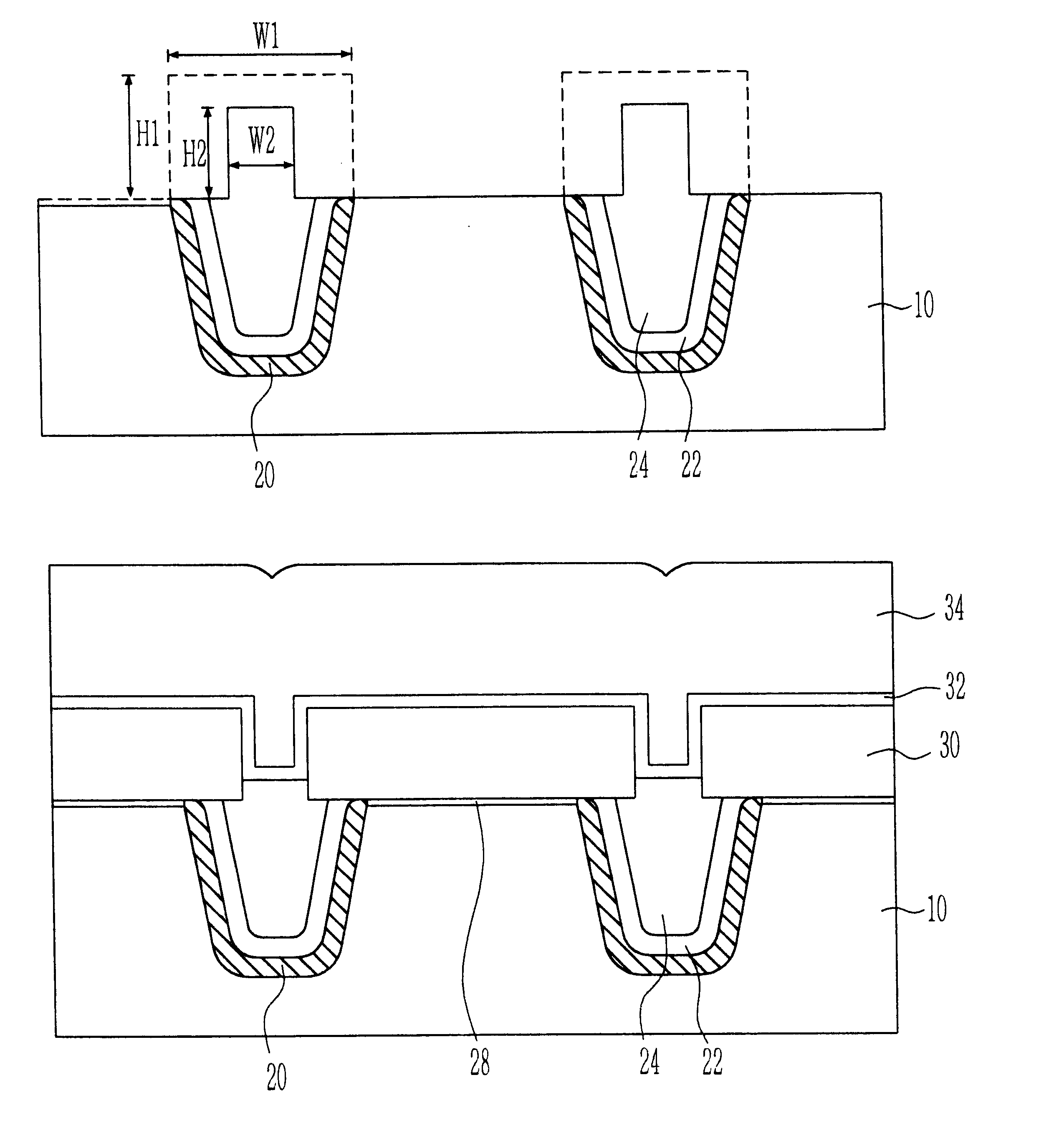Method of forming a self-aligned floating gate in flash memory cell
a floating gate and flash memory technology, applied in the direction of semiconductors, electrical devices, transistors, etc., can solve the problems of memory cell program and erase failure, poor uniformity of wafers, and difficulty in implementing uniform floating gates, etc., to achieve the effect of reducing spacing
- Summary
- Abstract
- Description
- Claims
- Application Information
AI Technical Summary
Benefits of technology
Problems solved by technology
Method used
Image
Examples
Embodiment Construction
The disclosed methods will be described in detail by way of a preferred embodiment with reference to accompanying drawings.
FIG. 1A to FIG. 1K are cross-sectional views of self-aligned floating gates in a flash memory cell for describing a method of the floating gate according to a preferred embodiment of the disclosed methods.
Referring now to FIG. 1A, a semiconductor substrate 10 is cleaned by a pre-processing cleaning process. Next, a pad oxide film 12 and a pad nitride film 14 are sequentially formed on the semiconductor substrate 10. At this time, the preprocessing cleaning process is performed using diluted HF (DHF, typically a HF solution into which H.sub.2 O is diluted at the ratio of about 50:1) or buffer oxide etchant (BOE, which is a solution in which HF and NH.sub.4 F are mixed at the ratio ranging from about 100:1 to about 300:1).
Further, the pad oxide film 12 is formed by dry or wet oxidization process at a given temperature in order to remove crystal defects or surface ...
PUM
 Login to View More
Login to View More Abstract
Description
Claims
Application Information
 Login to View More
Login to View More - R&D
- Intellectual Property
- Life Sciences
- Materials
- Tech Scout
- Unparalleled Data Quality
- Higher Quality Content
- 60% Fewer Hallucinations
Browse by: Latest US Patents, China's latest patents, Technical Efficacy Thesaurus, Application Domain, Technology Topic, Popular Technical Reports.
© 2025 PatSnap. All rights reserved.Legal|Privacy policy|Modern Slavery Act Transparency Statement|Sitemap|About US| Contact US: help@patsnap.com



